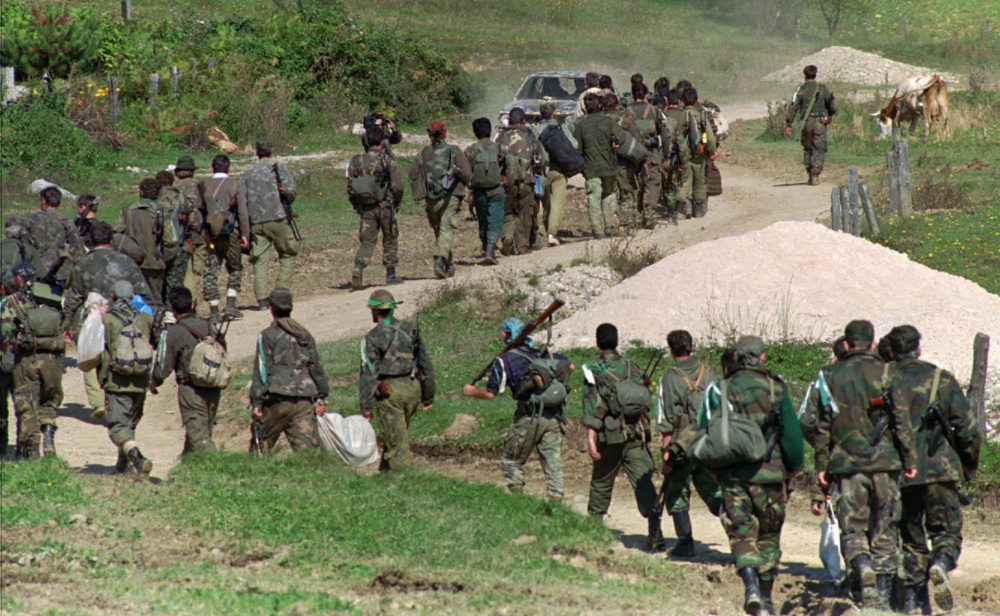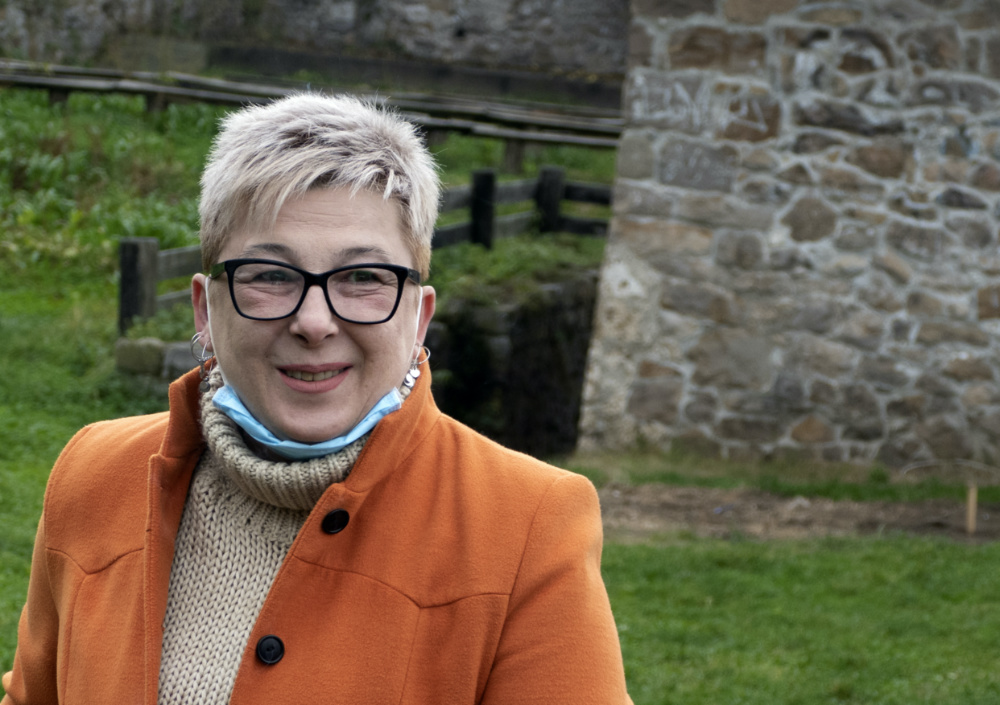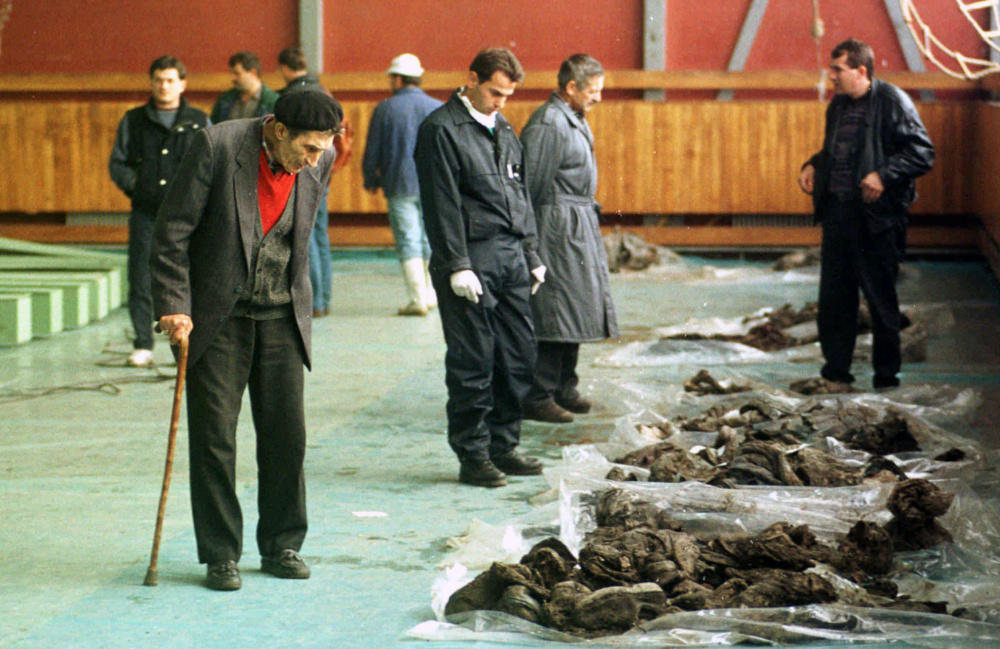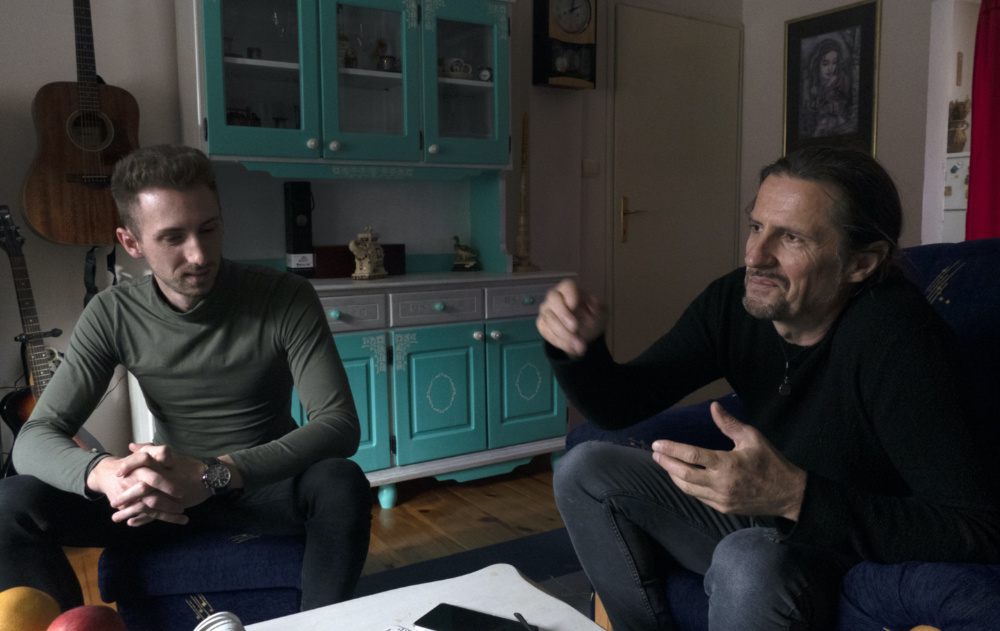
SABINA NIKSIC, of the Associated Press, reports on the challenges still facing Bosnia, 25 years after a peace deal brought an end to a war in which more than 100,000 died…
Sarajevo, Bosnia-Herzegovina
AP
As their ethnic leaders gathered around a table outside Dayton, Ohio, to initial a US-brokered peace deal a quarter-century ago, Edisa Sehic and Janko Samoukovic still were enemies in a war in Bosnia that killed over 100,000 people.
But the two, one an ethnic Bosniak woman and the other an ethnic Serb man, have often come together in recent years to visit schools and town halls where they talk about the futility of war from their first-hand experiences.

In this 28th September, 1995. file photo, a line of Bosnian government troops makes its way to the front-line near Mrkonjic Grad 120 kilometres north-west of Sarajevo, Bosnia. While it brought an end to the fighting, the Dayton peace agreement baked in the ethnic divisions, establishing a complicated and fragmented state structure with two semi-autonomous entities, Serb-run Republika Srpska and a Federation shared by Bosniak and Croats, linked by weak joint institutions. PICTURE: AP Photo/Darko Bandic/File photo.
In many ways, Bosnia today is a country at peace, a testament to the success of the Dayton Accords, which ended more than three-and-a-half years of bloodshed when they were endorsed 25 years ago on Saturday.
But more than a generation after the shooting and shelling stopped, full peace still feels elusive in Bosnia, where the April, 1992, to December, 1995, war gave rise to an ethnic cleansing campaign and Europe’s first genocide since World War II.
More than a generation after the shooting and shelling stopped, full peace still feels elusive in Bosnia, where the April, 1992, to December, 1995, war gave rise to an ethnic cleansing campaign and Europe’s first genocide since World War II.
The country’s three ethnic groups – Muslim Bosniaks, Orthodox Serbs and Catholic Croats – live in fear of renewed conflict as their nationalist leaders continue to stoke ethnic animosities for political gain.
Some Bosnians hope the election of Joe Biden as the next US president will bolster change by renewing Western interest in the country, one of Europe’s poorest. Biden visited Bosnia in 2009 as Vice President, becoming the last key US leader to do so.
When the Dayton peace agreement was reached in 1995, Sehic was a soldier with the Bosnian Government army and Samoukovic was fighting with Bosnian Serb troops seeking to dismember the country and unite the territory they claimed for their own with neighbouring Serbia.
The war was sparked by the break-up of Yugoslavia, which led Bosnia to declare its independence despite opposition from ethnic Serbs, who made up about one-third of its ethnically and religiously mixed population.
Armed and backed by neighbouring Serbia, Bosnian Serbs conquered 60 per cent of Bosnia’s territory in less than two months, committing atrocities against their Bosniak and Croat compatriots. Ethnic Croats and Bosniaks also fought against each other for a period of 11 months.
Before the war was over, some 100,000 people had been killed and upward of two million, or over a half of the country’s population, were driven from their homes.

Edisa Sehic smiles during talks with her daughter Anisa in Maglaj, central Bosnia, on Wednesday, 18th November. In recent years, Edisa Sehic and Janko Samoukovic have often jointly visited schools, town halls and other public venues throughout their still ethnically fragmented homeland to talk about the futility of war from first-hand experience. In 1995, when the Dayton peace agreement ended the war, Sehic was a soldier with the Bosnian government’s army and Samoukovic fought with Bosnian Serb troops. PICTURE: AP Photo/Almir Alic.
Samoukovic, a Bosnian Serb who like Sehic, was 23-years-old in 1992, did not crave war. He chose to not leave his home in Pazaric, a small town on the outskirts of Sarajevo. But he and his father were soon arrested by Bosniaks and taken to a makeshift internment camp where prisoners were beaten, used as forced labour and deprived of food.
Sehic, a Muslim, had taken up arms in the early days of the conflict after her older brother was severely injured while defending Maglaj, their hometown in central Bosnia, from advancing Bosnian Serb forces.
She met her husband on the frontline and mourned his death in battle three months after giving birth to their daughter and six months before the war’s end. Bosniaks were by far the greatest victims in the conflict in terms of numbers, accounting for about 80 per cent of the people killed in the conflict.
The General Framework Agreement for Peace in Bosnia, reached at Wright-Patterson Air Force Base outside Dayton, was considered a major US foreign policy achievement for the administration of President Bill Clinton.
A D V E R T I S E M E N T
{subscriber-ad}
The agreement was formally signed in Paris on 14th December, 1995, by the Presidents of Bosnia, Croatia and Serbia – Alija Izetbegovic, Franjo Tudjman and Slobodan Milosevic, respectively. Clinton and 50 other world leaders attending the signing ceremony.
Under the accords, nearly 60,000 international troops were deployed to Bosnia in December 1995 as part of a NATO-led mission to maintain peace and demarcate territory awarded to two semi-autonomous entities created by the agreement: Serb-run Republika Srpska and a federation shared by Bosniaks and Croats.
“When the [peace] agreement was reached, I was happy that there will be no more blood and death around us, hopeful that together we can start building a better future,” Sehic said. “But as time went by, I realised that the shooting had stopped, but little else had changed.”
While it brought an end to the fighting, the Dayton Accords formalised the ethnic divisions by establishing a complicated and fragmented state structure linked by weak joint institutions.
The deal “was essentially an armistice struck between a collection of warlords who are still present in the country, but had refashioned themselves as political leaders,” said Jasmin Mujanovic, a US-based political scientist of Bosnian origin.

In this 9th October, 1996, file photo, Bosnian Muslims trying to recognize their relatives killed by Bosnian Serbs in 1992, inside a sport hall in Kljuc, 160 kilometres north-west of Sarajevo, Bosnia. PICTURE: AP Photo/Darko Bandic/File photo.
In the immediate post-war years, the international community kept Bosnia on a reform course, pressuring its leaders to accept painful compromises in return for financial and other support.
But over a decade ago, as the international focus shifted to other global crises, Bosnia was mostly left to its own devices, exposed to the growing influence of Russia, China and Turkey.
Increasingly employing divisive nationalist rhetoric as a smoke screen, the political elites of all ethnic stripes have taken control of all levers of government for the benefit of their partisan loyalists.
“I hope that we shall be on the agenda of the Biden administration so that we can finally put behind what happened [during the war] and look into the future.”
– Haris Silajdzic, Bosnia’s war-time foreign minister and a Bosniak member of its government’s delegation in Dayton, Ohio, in 1995.
Their “criminal-political syndicates…have been blocking significant democratic reforms for decades,” Mujanovic said.
Facing the imminent danger of economic collapse, Bosnia is in dire need of constitutional reform, but the process “cannot even commence” without direct engagement of the United States, Mujanovic believes.
Some in Bosnia, where nearly half of the population lives under or close to the poverty line, hope that US interest will increase under Biden.
“I hope that we shall be on the agenda of the Biden administration so that we can finally put behind what happened [during the war] and look into the future,” said Haris Silajdzic, Bosnia’s war-time foreign minister and a Bosniak member of its government’s delegation in Dayton, Ohio, in 1995.
While agreeing that only the US can help fix Bosnia’s broken constitution, Mujanovic said real change will also require “the will, the pressure and engagement” of the country’s citizens.

Janko Samoukovic, right, speaks with his son Konstantin in Visegrad, eastern Bosnia, on Thursday,19th November, 2020. PICTURE: AP Photo/Almir Alic.
It is sometimes an uphill battle.
Samoukovic says his own son, now 26, was attracted by the lure of aggressive nationalist rhetoric when he was in high school but has since come to appreciate his father’s embrace of reconciliation.
Bosnians could leave the war behind “if people listened to our stories instead of having politicians on the evening news constantly filling their ears with hate speech,” Samoukovic said. “But most politicians don’t care about our happiness, they do whatever what works for them.”
Sehic, for her part, says she is driven by a sense or responsibility to make sure that neither her daughter “nor any other child will live through the same horrors as I did.”





